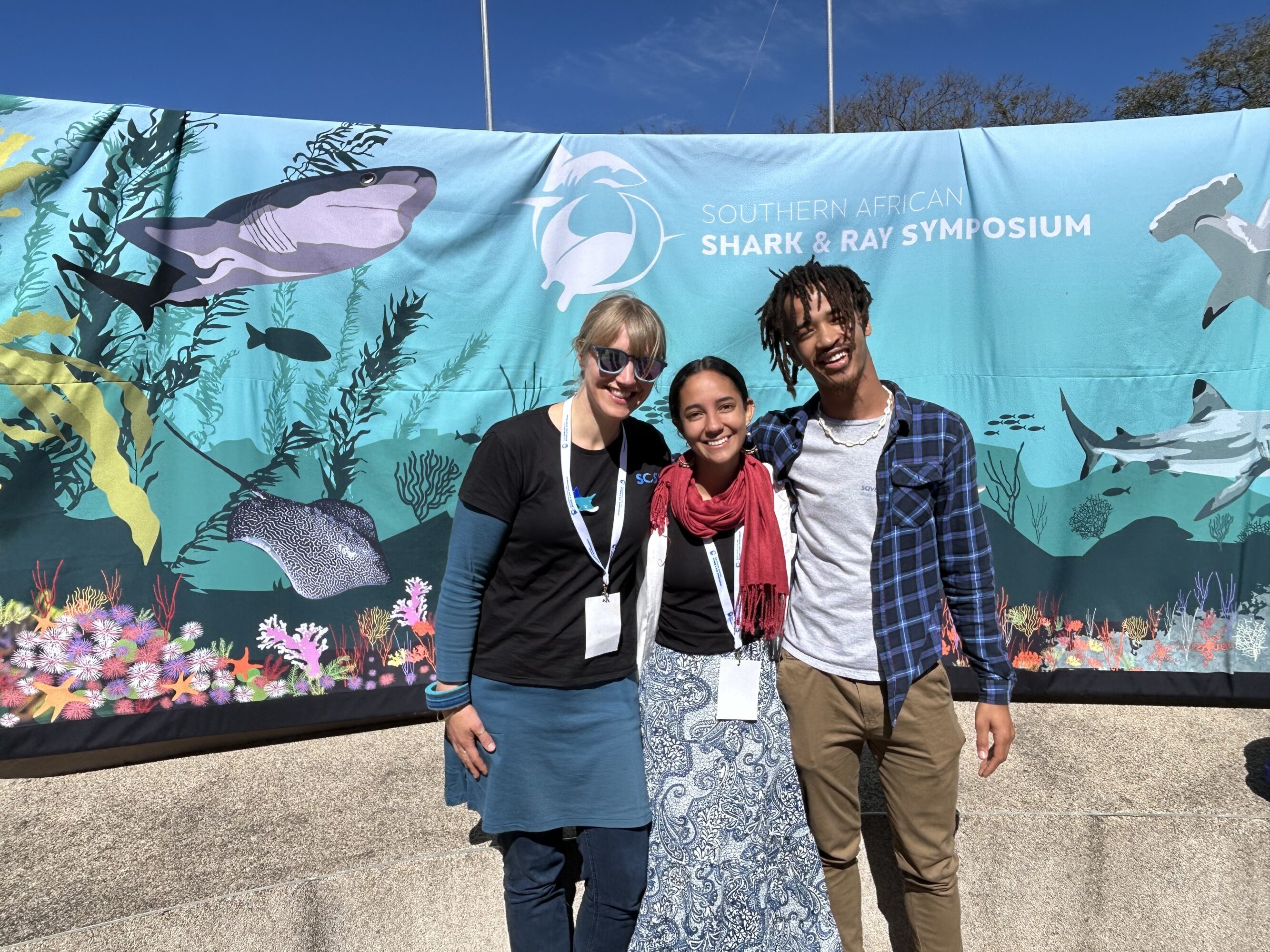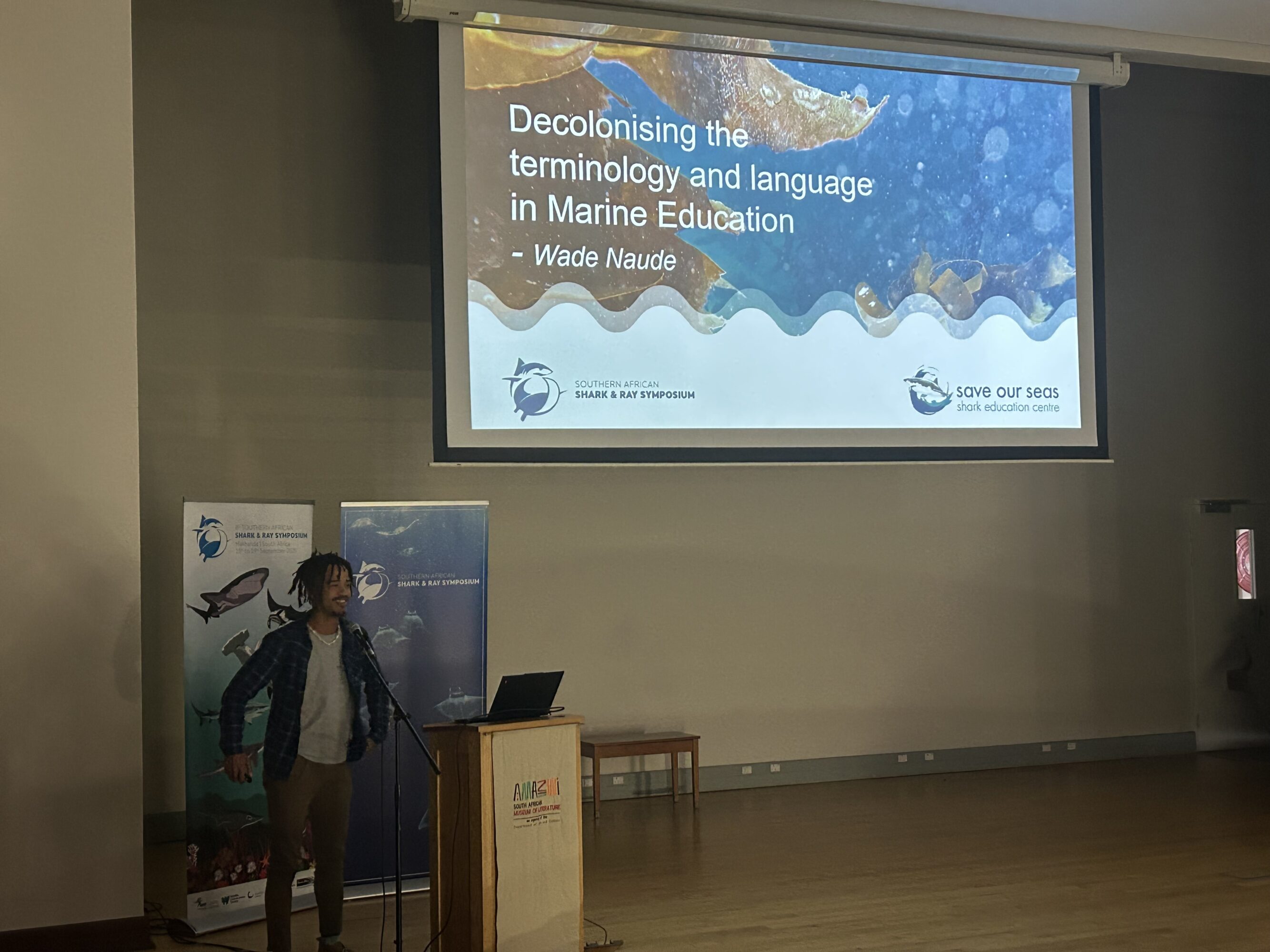Presenting at the 8th Southern African Shark and Ray Symposium
This year, I had the privilege of attending the 8th Southern African Shark and Ray Symposium (SASRS) for the very first time, and what an experience it was! From catching my first ever flight, to visiting Makhanda (Grahamstown) and presenting at my first scientific conference, every part of the journey felt new and exciting.
I’ll admit, the lead-up to the symposium was filled with a fair amount of anxiety. Presenting to a scientific audience for the first time can be intimidating, and being scheduled on the final day didn’t make things any easier. But listening to the incredible talks throughout the week quickly reminded me why I enjoy this field. The stories, research, and conservation efforts shared by so many individuals and organisations were deeply inspiring and highly relevant to our work at the Save Our Seas Foundation Shark Education Centre. One of the talks that really stayed with me was delivered by Elisabeth Fahrni Mansur, titled “Connecting minds, hearts, and hands through scientifically grounded, strategically planned educational outreach to create and sustain effective marine conservation solutions.” What stood out to me was how Elisabeth highlighted the power of using familiar, everyday tools within communities as educational resources. Instead of relying on expensive materials or formal classrooms, she showed how the very things people interact with daily can become powerful teaching tools for conservation. This approach not only makes marine education more relatable and inclusive but is also deeply rooted in the lived experiences of the community. It’s a reminder that meaningful conservation doesn’t always start with high budgets or advanced technology.
By the time it was my turn to speak, the nerves were real, especially after a few people mentioned they were looking forward to my talk! My presentation, titled “Decolonising Terminology and Language in Marine Education,” focused on our experiences as an environmental education centre and how language plays a crucial role in making marine science accessible. I shared some of the challenges we’ve faced in communicating across languages, the steps we’ve taken to overcome them, and the positive outcomes that followed. To illustrate this, I included examples of terms we’ve translated into Afrikaans, Kaaps (Afrikaaps), and IsiXhosa, using both formal and informal language to better connect with different audiences. One memorable conversation that week was with Sarah Waries from Shark Spotters, who jokingly asked if I’d include the Kaaps (Afrikaaps) translation of “anemone” – “see toetie”. “Toetie” is a Kaaps term referring to the female genitalia. I hesitated at first, but later realised that even humorous or colloquial terms carry cultural weight and can help connect science to people’s lived experiences.
During my presentation, I shared both the IsiXhosa (iVula Vala) and Kaaps (see toetie) terms for anemone, but just before showing the Kaaps version, I asked Sarah, who was sitting right at the back of the crowd, to say it. When Sarah enthusiastically shouted “SEE TOETIE!” from the audience, the entire room erupted in laughter, a moment none of us will forget! From that point on, I somehow became known as “See Toetie,” and that was my own fault, but honestly, I don’t mind.
Beyond the laughs, the presentation sparked meaningful conversations about language, accessibility, and decolonising science communication. Many delegates reflected on how language shapes their outreach, and one even raised the colonial roots of certain fish names, like the Cape sea bream’s common name, “Hottentot,” which refers to the derogatory name given to the indigenous people (Khoi and San) of Southern Africa by Dutch settlers.
These discussions reinforced the importance of culturally inclusive communication, something we strive for in all our educational work. And then came the biggest surprise of all, at the gala dinner, they announced: “And the best speaker is none other than… See Toetie!”
I couldn’t stop laughing, but behind the laughter was deep gratitude. Winning best speaker was a huge personal milestone, and attending SASRS was far more than just a professional achievement; it was a celebration of connection, courage, and community.



